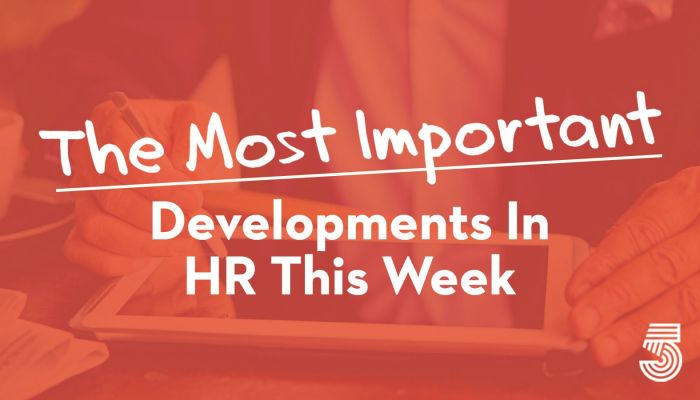The M.I.D., as we call it, is curated by our editorial team from more than 50 news sources. Like a lot of good ideas, this started as something I wanted for myself. If I can’t read everything, I at least want to stay abreast of the most important developments.
This week in HR, Amazon, Levis, and other companies took quick action to protect employees’ health rights, annual reviews got another bashing, older workers joined the Great Resignation, change exhaustion was a thing, and engaging remote employees was in the news.

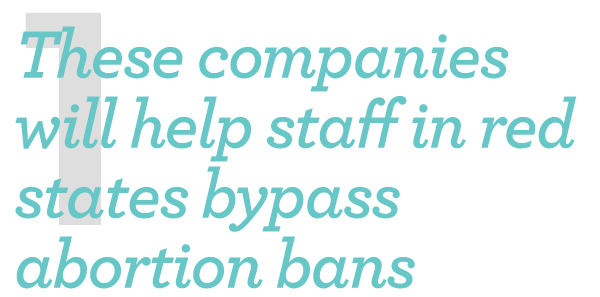
Millions of women in more than 25 states face an abortion ban if the Supreme Court overturns Roe v. Wade, the landmark 1973 decision that legalized the procedure nationwide. For many of those women, employers’ benefit packages may be the only way they can soon afford a legal abortion. Amazon became the latest corporation to cover employees’ travel costs to seek abortion care. The company told staff it would pay up to $4,000 in travel expenses annually for medical treatments including abortions, according to a message seen by Reuters. An Amazon spokesperson confirmed the nature of the Reuters report to CNN Business. The company’s announcement echoes similar moves by Citigroup, Yelp, Uber, and Lyft to help employees bypass Republican-led efforts in several states to effectively ban abortion. And it comes just hours after a bombshell report by Politico indicated the Supreme Court is prepared to overturn Roe v. Wade. CNN

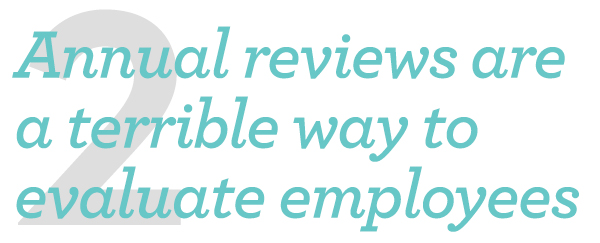
Gena is a really hard worker. She does technical contract support for real-estate salespeople in Southern California at one of the largest agencies in the country. She enjoys the work and is proud of the culture of the company. Her computer login data reveals that she starts work at the same time every day, and, with the exception of an hour for lunch, she remains connected and active until she shuts her computer off at 6 p.m. And yet she is now interviewing to leave the company she loves. (Spoiler alert: It’s about annual reviews.) Annual performance reviews are worse than useless, argues consultant and author Marcus Buckingham: too infrequent, dehumanizing, and irrelevant to real-world performance. They miss the gritty, granular, unique raw material of the working world. To maintain morale, stay connected to employees, and avoid attrition, managers should check in with their reports every week. WSJ

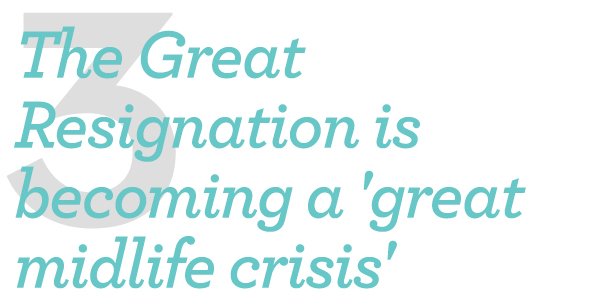
With prices soaring and analysts predicting a recession on the horizon, it might not seem like the best time to quit your job. But that’s not keeping American workers, especially older, more tenured ones, from doing so. Higher-paid workers are increasingly quitting their jobs, as the Great Resignation — also known as the Great Reshuffle — enters its second year. Earlier in the pandemic, the trend was led by younger, less-tenured workers in low-paying industries like retail, food service, and health care. Now, the main growth in quit rates is coming from older, more tenured workers in higher-paid industries like finance, tech, and other knowledge worker fields, according to data from two separate human resources and analytics companies. These workers say they are searching for less tangible benefits like meaning and flexibility. Between the first quarter of 2021 and 2022, the greatest growth in resignations was among people aged 40 to 60 and those with a tenure of more than 10 years, a Visier dataset from companies with over 1,000 employees shows. Vox

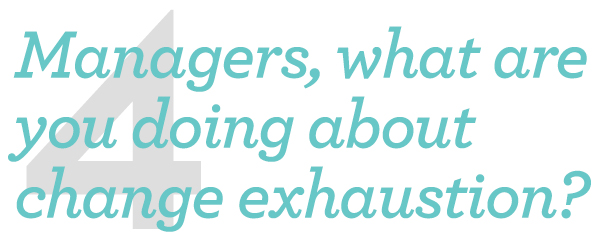
Pre-COVID, many employees already were experiencing change fatigue, defined as feeling apathetic toward or overwhelmed by too many organizational changes in a row. When COVID hit, everything changed. The heightened level of uncertainty in both our work and home lives pushed many of us into change exhaustion. How can leaders help their teams combat change exhaustion — or step out of its clutches? Too often, organizations simply encourage their employees to be resilient, placing the burden of finding ways to feel better solely on individuals. Leaders need to recognize that change exhaustion is not an individual issue, but a collective one that needs to be addressed at the team or organization level. Tips: Pause to acknowledge change and the discomfort that comes with it. Adopt the mantra: “I am a person who is learning to …” vs. “I can’t do this.” Make a plan from which you will deviate. Invest in rituals. HBR


The “Great Resignation” and the disconnectedness of remote working have strained many organizations. According to a Gallup survey from the summer of 2021, the exodus of people leaving their jobs is mainly due to poor engagement. The company’s survey, “State of the Global Workplace: 2021 Report” identified a global engagement rate of 20%; 34% for the U.S. and Canada. It correlated a loss of productivity with disengaged employees that’s equivalent to 18% of their salary, a high yet hidden hard cost. Multiply this loss at scale, and the problem hinders a company’s innovation and growth prospects. Companies need to manage and improve the employee experience to retain top talent and build a culture of growth to help shift the engagement dynamic. Perform pulse checks to gain feedback from employees. Uncover sticking points in their day, whether fellow personnel, technology roadblocks, or process issues. Self-service tools help empower employees with choice and control over their own benefits and services. At the same time, they feel connected to the process and can choose options that align with their specific needs instead of settling for a benefit and becoming disgruntled. Training







